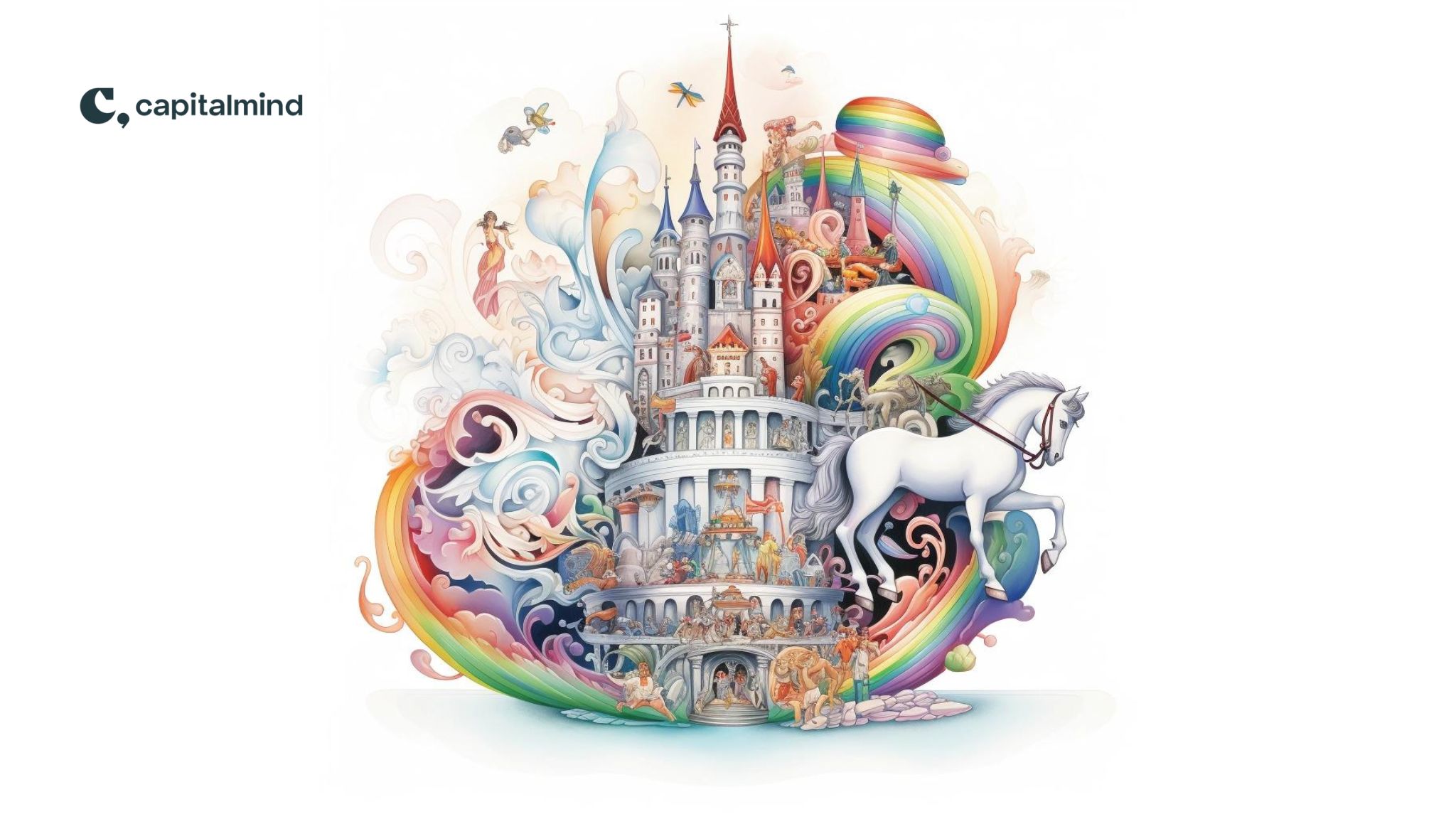I remember the precise moment I had my first doubts about books on management success.
In one of my earliest jobs, as a fresh management consulting associate, we used to get assigned books at random by the partners we reported to. Predictably, these were from management lessons and Business Strategy genres. Saturday mornings were set aside for us to present what we’d understood from those books to the rest of the office. A way to make sure we read them.
My BS detector first went off while reading this book called ‘Big Winners and Big Losers‘ by Alfred Marcus. As far as I know, this book didn’t end up on any bestseller lists, so here’s a quick summary:
The book analyses nine “big winner” companies and nine “big loser” companies over ten years from 1992-2002 to understand the key differences that lead to long-term success or failure.
The author identifies four essential qualities that differentiate the big winners from the big losers:
- Niche strategy – Winners occupy a “sweet spot” in the market with a well-executed niche strategy. Losers fail to find or defend a niche.
- Agility – Winners are agile and adapt to market changes. Losers tend to be rigid and cling to exhausted strategies.
- Discipline – Winners maintain discipline to reduce costs and improve quality. Losers display ineptitude and lack financial discipline.
- Focus – Winners remain focused on their capabilities and strengths. Losers lose focus and stray into too many areas.
According to the author, balancing these four qualities provides the framework for sustainable competitive advantage.
As I was skimming the book to finish my review and get back to billable work, I paused on an example of how “Focus” helped one successful company while lack of focus cost another. Something seemed off, so I flipped back to the “Agility” chapter.
One winning company had succeeded by remaining “focused” on its core business. Yet another winner was praised for being “agile” by changing its core offering. Similarly, one struggling company was criticized as “rigid” for not adapting its core, while another loser had “strayed” from its mainstay business. The business cases seemed selectively chosen to fit narratives around “Focus” versus “Agility.” Wait a minute.
Could it be that the rules of business success (and failure) are an elaborate exercise in hindsight bias? Of joining the dots after the fact?
After the 2011 World Cup final, we all, armchair experts, called MS Dhoni’s decision to promote himself ahead of Yuvraj Singh brave and tactically brilliant. We would have called it the daftest decision in sports history if the outcome had gone the other way. Hindsight Bias. Like choosing to go with that pitch in Ahmedabad. (No, too soon.)
Once you see it, you can’t unsee it.
You can dismiss ‘Big Winners and Big Losers’ given hardly anyone has heard of it. However, three management books that exhibit the same fundamental flaw have sold more than 10 million copies combined.
The original blockbuster that kickstarted the management success genre is ‘In Search of Excellence‘ by Mckinsey consultants Tom Peters and Robert Waterman.
‘In Search of Excellence’, published in 1982, is based on research into 43 “excellent” American companies across several industries like technology, consumer goods, and services. Through extensive interviews and study, the authors identified eight common attributes that drove the success of these organisations:
- A bias for action
- Close to the customer
- Autonomy and entrepreneurship
- Productivity through people
- Hands-on, value-driven management
- Sticking to the core business (niche focus)
- Simple form, lean staff
- Simultaneous loose-tight properties
All great qualities to have for any business. But hardly clearly defined.
Despite its massive commercial success, the biggest criticism of ‘In Search of Excellence’ was that by starting with successful companies to begin with, it had survivorship bias.
Like concluding that wearing Nike gear and practising a lot makes you a great tennis player because the world’s greatest tennis players wear Nike and practice a lot.
As it turned out, even great tennis players don’t stay great.
Here’s what happened to just some of the excellent companies soon after the book came out:
- Wang Labs – Declared bankruptcy in 1992.
- NCR – Significant declines and mass layoffs in the 1990s. Sold to AT&T in 1991.
- Xerox – Fell from grace due to overseas competition. Massive losses in the early 2000s.
- Data General – Collapsed and sold its assets to EMC in 1999.
- Delta Airlines – Filed for bankruptcy in 2005 after years of losses.
Among the companies that did not disappear, including the likes of IBM, HP, 3M, McDonald’s, Dana, and Emerson Electric, most struggled to beat the S&P500 over the two decades. Walmart, Intel, Merck, and J&J were notable exceptions that thrived.
Subsequent flagbearers of the business success genre addressed the survivorship bias problem by doing what Alfred Marcus did. They included a set of mediocre or “unsuccessful” companies for comparison with the great companies before drawing out the rules of corporate success. Contrasting ordinary companies against great companies should tell us what additional ingredients the latter have.
Built to Last: Successful Habits of Visionary Companies by Jim Collins, a McKinsey consultant and Jerry Porras, a Stanford Professor, did precisely that.
The book examines 18 “visionary” companies that have demonstrated enduring success and compares them to “similar” but less successful companies in the same industries. The research aims to identify the key factors that differentiate visionary firms.
They concluded visionary companies are guided by a core ideology that gives them a purpose beyond just making money. They also exhibit key dynamic traits like experimentation, embracing change, and stimulating progress, allowing them to evolve over time.
Several of those visionary companies faced trouble soon after the book was published.
- Marriott – Faced significant losses in the early 2000s after overexpansion.
- Walt Disney – Struggled after the death of Frank Wells in 1994, with multiple poor-performing films and leadership issues until the 2000s revival.
- Citicorp struggled after the dotcom crash and various accounting scandals in the early 2000s
- Motorola lost market share in the mobile phone business
- Sony underwent massive restructuring, selling Columbia Pictures and Sony Music Entertainment to cover losses in its consumer durables business
In 2011, Jim Collins returned with ‘Good to Great‘; this time, his co-author was Morten Hansen, a UC Berkeley professor.
The book, written after five years of research, set out to identify the factors that allow companies to make the transition from being good to truly great. They even defined “greatness” as having delivered 3x the market average over 15 years. It’s hard to argue against that definition, especially if you’re an investor.
The book found what the companies that make the transition from good to great have:
- Level 5 Leadership: Are led by humble, determined leaders focused on the company, not themselves.
- First Who, Then What: Get the right people on the bus first before figuring out where to drive.
- Confront Brutal Facts: Confront the brutal truth of their situation to make good decisions.
- Hedgehog Concept: Understand what they can be the best at and focus on that.
- Culture of Discipline: Maintain a disciplined culture, people and approach.
- Technology Accelerators: Avoid fads and only adopt technology that fits their hedgehog concept.
Again, these are solid logical concepts you’d want for your company, except maybe the hedgehog concept of only doing one thing to exclude everything else.
Sure enough, like for the other two books, only four of the 11 companies outperformed the market two decades after the book was published. One went bankrupt, while two others have been close at different times.
So what does the exhaustive study of successful companies of the past tell us?
Past performance is no guarantee of future results
All these books resulted from years of data-gathering, painstaking classification of each bit of information (press releases, business publications, financial reports), and interviews with managers before the findings were finalised. You could not imagine doing more in the areas the authors explored and tackled.
Overall, across the 48 companies (with overlap) profiled as great and successful companies in those books, 21 (44%) outperformed the market in the two decades after. The remaining 56% did not beat the market. Investing in great companies to outperform the market was slightly worse than a coin toss.
Fifteen companies (almost 1 in 3) trailed the market by over 5% annually. Of those, several went bankrupt or were acquired at fire sale prices by other companies. The remaining companies delivered market returns or underperformed.
Past and current greatness is not even a guarantee of survival, let alone future dominance.
Causality, but the other way
If you worked at a company when it made record profits, chances are the atmosphere in the office was supportive. There were budgets to conduct manager training, offer flexible policies around days off, and offer more employee-friendly perks. You’d strongly agree if you were asked whether the company was good at people management.
Conversely, if the company was going through a few quarters of declining earnings or declining sales, budgets were likely cut, hiring and increments frozen and additional policies added for expense approvals. Someone asked about their time would shudder, saying it was their worst workplace.
Everyone looks good when things work. Good leadership, smart strategy, excellent execution. Then it stops working. And all of it looks dumb, but in retrospect.
Phil Rosenzweig calls it ‘The Halo Effect’. Given a currently successful company, all things about the company will seem to have been instrumental to that success. The opposite will look true for unsuccessful companies.
The interview responses, a vital component of reaching conclusions, were predetermined once the authors picked companies in their heyday to analyse.
Being in the right place at the right time is underrated
The one glaring thing missing from the extensive studies was understanding the companies’ external environments.
Walmart happened to be in the discount retailing space just when the concept of big box stores and shoppers driving to the suburbs to do their shopping took hold. Of course, it deserves credit for modernising its supply chain to cater to that model, while Kmart struggled to shift.
National Semiconductor, Wang Labs, and DEC were dominant in the era of centralised computing and mainframe computers. Intel stole their thunder when the field shifted to personal computers.
Philip Morris prospered in an era of big tobacco, ironically when anti-smoking policies forbade advertising, saving them costs while effectively ending the risk of new competition.
On the other hand, the maker of the finest horse carriages in the early 1900s couldn’t have done anything other than exit the business when Ford’s Model T started gaining mass acceptance.
The common theme for every company that did well was it was in the right place at the right time.
Few companies manage to swim against the tide when their core line of business comes under existential threat because of changing technology or broader demographic shifts.
I’m therefore naturally sceptical of analysis that goes like this:
Here are a bunch of great companies based on how they’ve done in the past ➡ Here are the things we found that make them great (visionary promoter, distribution network, etc.) ➡ Other companies do not have these excellent characteristics (because look at their results so far) ➡ Therefore, buying these companies and holding them for the next two decades is the best (and only) investment strategy.
Believing that great companies of the past automatically qualify as buy-and-forget stocks for the future is one of the most enduring fallacies in investing because the evidence shows the opposite. From the ‘The original Nifty Fifty‘ of the 1970s to businesses like Kodak, Xerox, Nokia, Blackberry, Sears, and GE that looked unbeatable at one stage only to decline into irrelevance, some quickly, others gradually.
Take recipes for greatness and claims of infallible investments with a grain of salt. Context and luck play an outsized role, often more than the easily visible and controllable things.
Even the greatest companies in history couldn’t fight the trend. We would do well to respect this fact.
Anoop is on Twitter at @CalmInvestor
You might also like reading:
Keep your investing identity small







